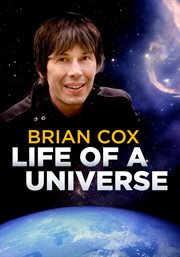Review by Publisher's Weekly Review
"This is the story of the universe. And it begins:/ Once upon a time,/ we don't know." Suffused with awe, astrophysicist Stahl's well-chosen words, tightly paired with Allen-Fletcher's jewel-toned galactic pictures, aim to capture something of the mind-blowing scope of the big bang. Like the event itself, the story moves with dizzying speed from nothingness ("At first, the universe was small") to somethingness (incomprehensible vastness whose one-second growth is represented by 43 zeroes). Stahl's lyricism invites wonder--"It was a hot, messy,/ churning soup that cooled./ And fell together neatly" into galaxies--while guiding readers toward Earth ("a planet that's just right") and the enticing possibility of exoplanets, where ("on another planet that's just right") other beings may share this fundamental creation story. An author's note delves into the underlying science. Ages 4--9. (Apr.)
(c) Copyright PWxyz, LLC. All rights reserved
Review by School Library Journal Review
PreS-Gr 3--Stahl offers a contemplative yet informative examination of the Big Bang. With brief text and mixed-media illustration that are strategically shadowy or explosively bright, scientific knowledge is shared in direct conversation with readers. The narrative begins with a child wearing space-themed pajamas and gazing at the night sky, then delves into facts about galaxies and stars accompanied by artwork featuring whorls of colorful light. The story's focus returns to the child in their bed (reading The Big Bang Book) accompanied by the text, "And on that planet is you. And everyone else." The author, a doctoral student in astrophysics, ends the book with a note acknowledging the gaps in scientific knowledge while also sharing detailed mathematical and astronomical facts about the universe. VERDICT In a crowded field of Earth-origin and evolution stories for children, this is well worth a look for its simple, but not vague, approach to the topic. Alongside Marion Dane Bauer's and Ekua Holmes's poetic The Stuff of Stars, it will awaken young readers' curiosity.--Elaine Fultz, Oakwood City Schools, Dayton
(c) Copyright Library Journals LLC, a wholly owned subsidiary of Media Source, Inc. No redistribution permitted.
Review by Kirkus Book Review
An astrophysicist goes back to our cosmic origins: "Once upon a time, / we don't know.""Maybe it was dark. / Maybe there was nothing." Carefully distinguishing verifiable fact from informed speculation, Stahl ushers readers past the first second of the Big Bang through the transformation of plasma to matter, then the appearance of swirling galaxies and their stars and planets, and finally to a planet that's "just right" for "you. / And everyone else." In her suitably dramatic illustrations, Allen-Fletcher modulates from flat black pages to shimmering blasts of light and fiery stellar nurseries that give way to a misty blue Earth, with an indistinct figure in a dim bedroom scene hung with glow-in-the-dark starsand, accompanying the author's suggestion that there may be more than one planet that's "just right," a pointy eared silhouette likewise looking up into a starlit sky. Unlike James Carter's similarly wonder-infused Once Upon a Star, illustrated by Mar Hernndez (2018), the dizzying notion that the Big Bang marked the beginnings of time and space themselves as well as matter goes unremarked herebut in an expansive afterword the author urges readers to ask big questions like "What am I?" and "Where am I?" because they "cut to the heart of how much we understand about the universe."A stately recap drawing on current physics and astronomy and appropriately cognizant of their limitations. (Informational picture book. 6-10) Copyright Kirkus Reviews, used with permission.
Copyright (c) Kirkus Reviews, used with permission.

